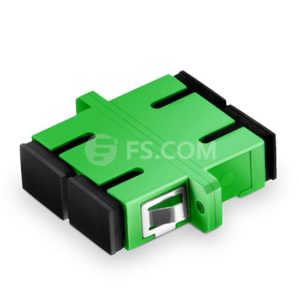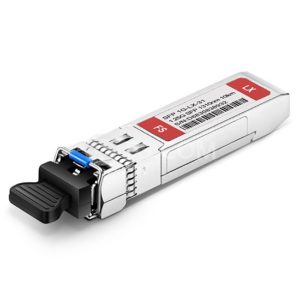Half duplex and full duplex are two communication channels in telecommunications and computer networks. These communication channels provide a way to convey information. The communication channel can be a physical transmission medium or a logical connection on the multiplexing medium. Physical transmission medium refers to substances that can propagate energy waves, such as lines in data communication. Logical connections usually refer to circuit switched connections or group mode virtual circuit connections, such as radio channels. With the help of communication channels, information can be transmitted smoothly. In this article: Half Duplex vs Full Duplex: What Are They, we will discuss half duplex and full duplex.

Figure 1: Duplex Fiber Optic Adapter
Half Duplex vs Full Duplex: What Are They
We can note that half duplex and full duplex are duplex. Duplex products are very common, only in optical fiber communication products, and in terms of connectors, there are many kinds of duplex connectors, such as SC duplex connectors and LC duplex connectors. So what are half duplex and full duplex? What specific differences do they have?
First, let’s focus on full duplex. Full duplex data transmission means that data can be transmitted in both directions at the same time. For example, in a LAN with full duplex transmission technology, one workstation can send data over the wire while another workstation is receiving data. Full duplex transmission must mean two-way lines (which can move data in two directions).

Figure 2: Full Duplex
Just like the full duplex data transmission we mentioned above, half duplex data transmission also means a two-way line that can transmit data in both directions. However half duplex data transmission refers that data can be transmitted in both directions on the signal carrier, but not simultaneously. For instance, on a LAN using a half duplex transmission technology, a workstation can send data over a line and immediately receive data on the line from the same direction in which the data has just been transmitted.
![]()
Figure 3: Half Duplex
Half Duplex vs Full Duplex: What Are the Differences?
- 1) In half duplex, both transmitter and receiver can send signals, but only one signal is sent at a time. The walkie-talkie is an example of half duplex communication. While, in full duplex, transmitter and receiver can send signals simultaneously. The telephone is an example of full duplex.
- 2) In half duplex mode, both devices connected to the link can transmit signals, but only one device can be transmitted at a time. In full duplex mode, all devices on the link can be transmitted at the same time.
- 3) The performance of full duplex is better than half duplex, because it makes better use of bandwidth than half duplex.
Conclusion
The concept of communication channel plays a key role in understanding the operation of network. Half duplex and full duplex are two communication channel modes. Each of them can be deployed for different applications. It is more cost-effective to choose the right optical cable according to its channel mode. FS.COM has many good duplex products at logical price. If you have any other questions about the topic: half duplex vs full duplex or if you have need of high quality duplex products, please visit www.fs.com.
